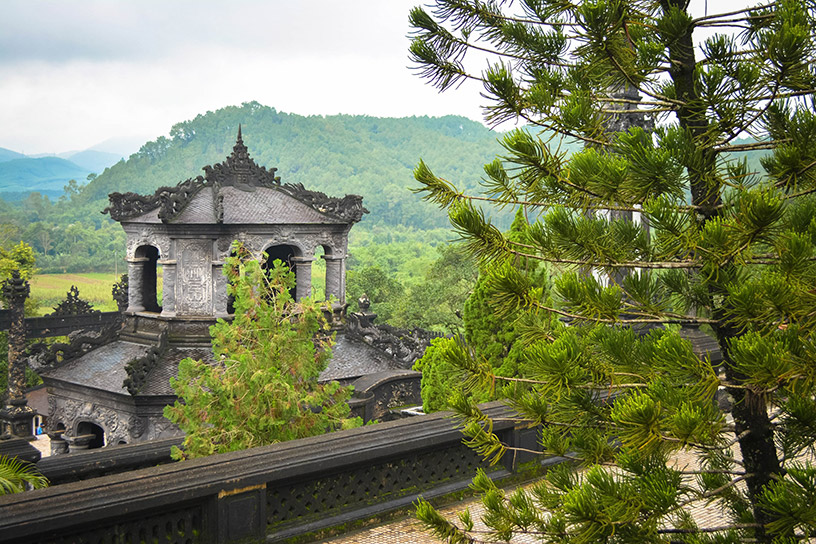
Hue is one of central Vietnam’s major cities and is filled with history, tombs and Vietnamese culture. It is best known for its royal tombs. Hue was a seat of power during the Nguyen Dynasty, which ran from 1802 to 1945. The rulers during this period were buried in the countryside surrounding Hue, and you can visit some of their tomb complexes. There are six tombs all up scattered around Hue, but the most popular royal tombs are for the Emperors Tu Doc, Kinh Dinh and Ming Mang.
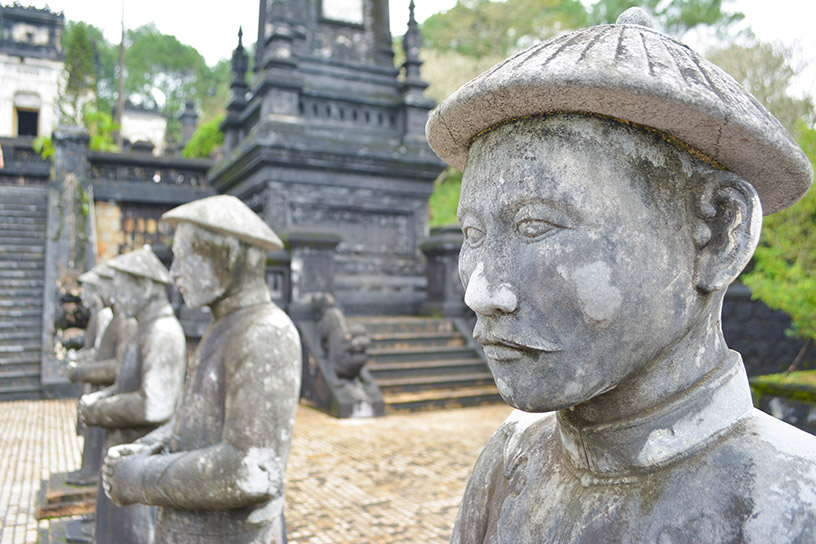
There are a number of ways to reach the tombs. The most common method is via an organised tour which visits three of the main monuments, the Hue Citadel, and includes a Dragon Boat river cruise. You can also do the tombs independently by hiring a scooter or going by motorbike or car taxi.
After being on so many buses in the days prior, I opted to do the trip independently, hiring a motorbike taxi to take me one way up to the Kinh Dinh Tomb and then walking back. Most tour buses start at Ming Mang Tomb and work back towards Hue.
Kinh Dinh Tomb is located about 10km from the Hue city centre, so it’s not for everyone to walk back, but I stopped at a lot of other sights on the journey back and found it interesting to take in the everyday street life of Hue outside of the city centre.
The Kinh Dinh Tomb was constructed for the 12th Emperor of the Nguyen Dynasty over an 11 year period from 1920-1931. The tomb complex is a beautiful blend of grey-toned buildings with a courtyard filled with statues of soldiers and horses, and an ornate mosaic mausoleum where the Emperor is buried.
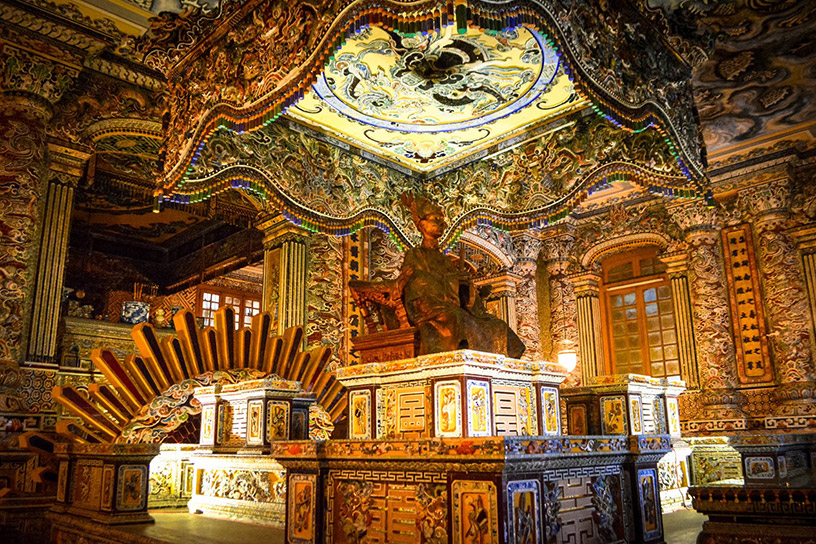
The Tu Doc Tomb is located about a 6km walk from the Kinh Dinh Tomb. This tomb was constructed between 1864-1867 and was designed by Emperor Tu Doc himself. This is one of the tomb complexes that was also used by the Emperor during his reign. The expansive grounds surrounded by fortress-like walls include many decorated orange toned buildings, as well as a lake and an island. The Tu Doc Tomb complex covers a large area so spare an hour or two to look around.
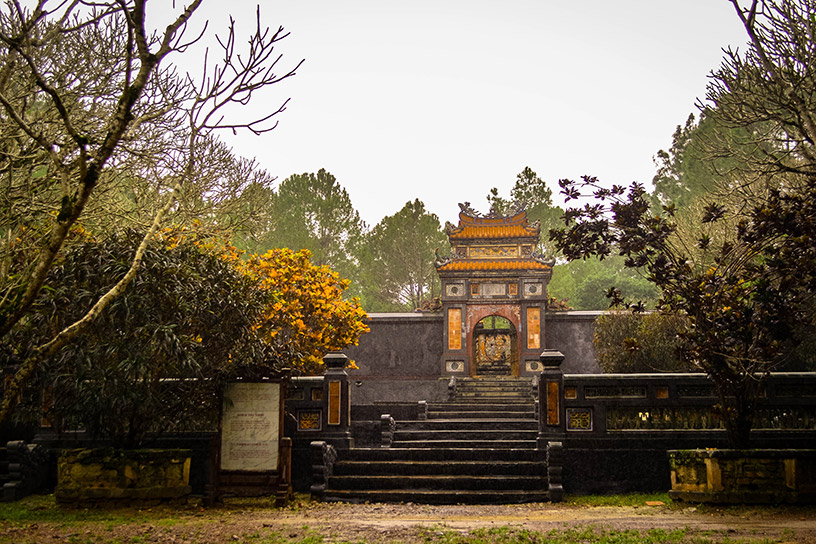
Hue’s Abandoned Water Park
Did you know there’s an abandoned water park near the Kinh Dinh Tomb? No, neither did I until I saw Abandoned Water Cottages marked on my Maps.me map of Vietnam, googled it to find it was an abandoned water park, and for fear of missing out, was intrigued to take a look.
Ho Thuy Tien was built in 2004 as a family amusement park but closed not long after its opening and was abandoned. It’s easy to find following the roads on the Maps.me app, and you’ll walk through the front gates. I’d heard reports that sometimes people charge you to enter the site, but I saw no one when I walked in.
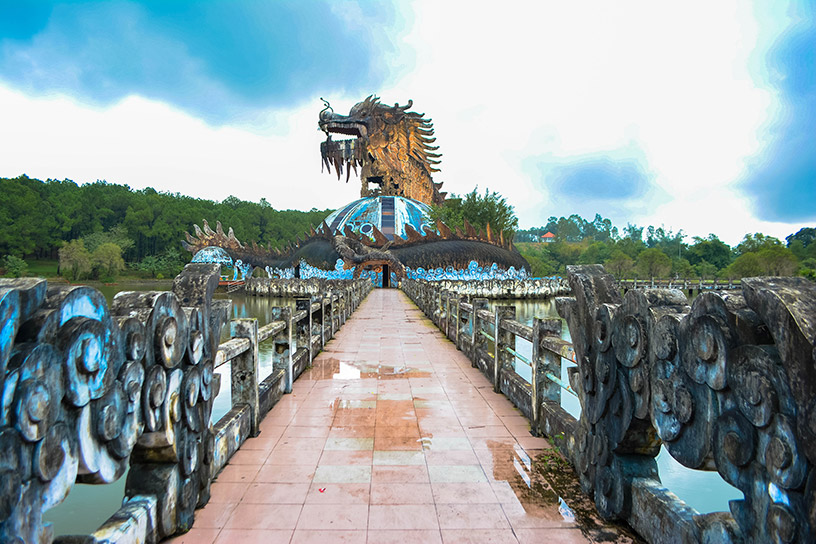
It was really creepy being the only one there (it’s not on the tour bus trail), so you’ll likely have the place all to yourself – or share it with a handful of curious fellow backpackers.
I saw a rotting grandstand, which once would have been to seen performances on the lake, and a graffiti-filled tower in the form of a dragon that once was a viewing point. There are a few other points of interest around the lake that belonged to the park - including water slides - but I didn’t get to them all.
Hue Citadel
Back in Hue’s centre, the must-see is the Citadel. The citadel is housed in a vast complex that includes interesting buildings and sites so it’s another one you’ll need some time to check out. The fortress was built in the early 1800s between 1804 and 1833.
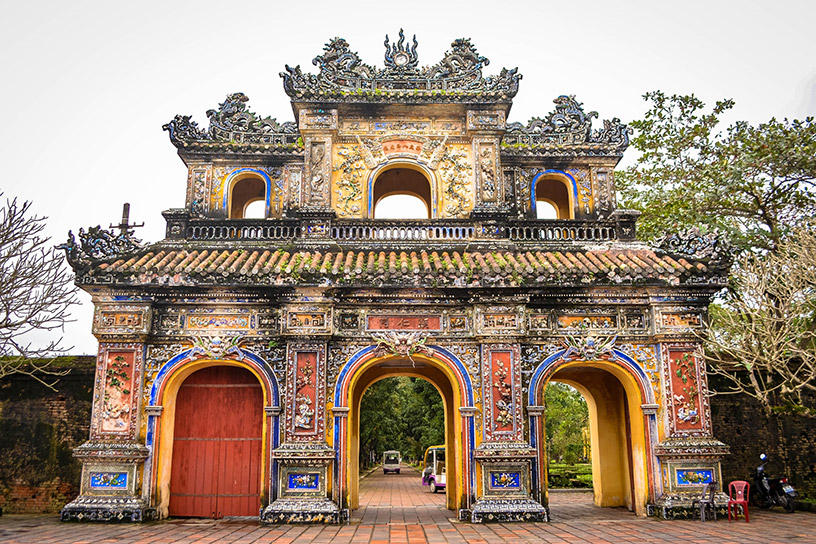
The highlight for me was the 10 kilometres of two metre thick walls surrounding the citadel and the beautiful entrance gates.
The historic town of Hoi An
Most tourists heading south from Hue will end up in the historic town of Hoi An. Hoi An is about a 3.5-hour drive from Hue. Buses leave several times a day from Hue to Hoi An, and your accommodation should be able to book it for you.
I arrived in Hoi An hoping for the sun (my wish was granted) as the city had been plagued by floods only a few days before. Be warned that the city usually floods a couple of times a year during the wet season but this year the floods came later than usual.
Hoi An is known for its lantern filled streets and tailors. The Old Town is a UNESCO Heritage Site owing to the historical buildings populating the streets fronting the Perfume River.
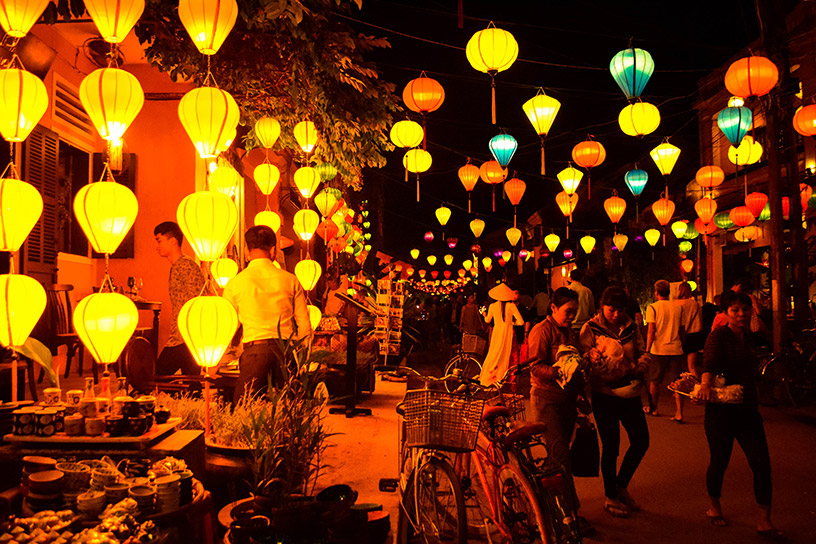
There seems to be more clothing tailors than restaurants in Hoi An, and this is the place to get tailored clothing such as suits, pants or dresses – and you can even order shoes made to fit. I was guilty of ordering two dresses and a pair of sandals, but it was worth it! I was only in Hoi An for 24 hours, but the tailors were able to turn around my order in that time.
Hoi An is also well known for the lanterns populating its old town streets. The best time to see the lanterns is at night when they are lit up and fill the streets with colour. You may be asked to pay a small fee to enter the Old Town at night.
Another popular activity in Hoi An is to take a boat ride on the Perfume River. There are many boat operators touting trips, so it’s easy to find one to suit your budget.
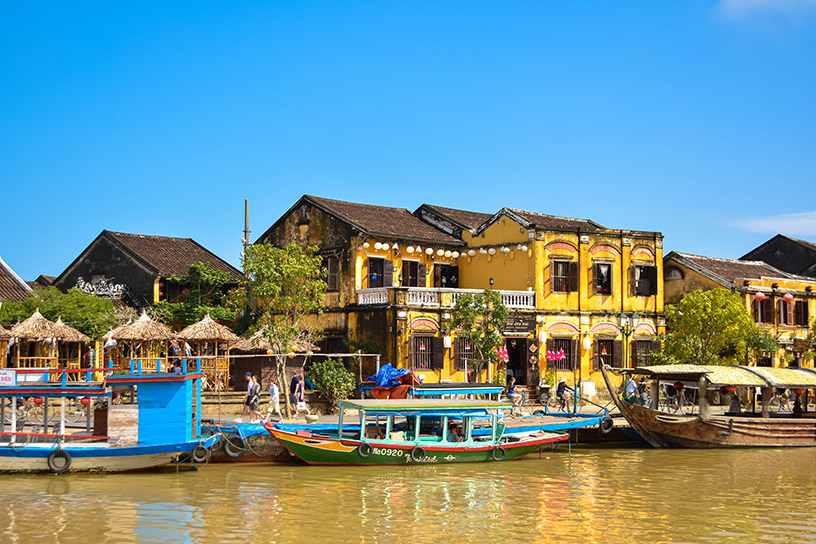
Things You Should Know:
- Hue’s abandoned water park is not on the regular tourist route, and you’re unlikely to find it on any tour. You can take a motorbike or taxi there, or it’s only a couple of kilometres from the Kinh Dinh Tomb. If you download the maps.me App, you’ll find it marked on the Vietnam map as Abandoned Water Cottages, so it’s pretty easy to find. Beware of broken glass in some parts of the precinct.
- If you’re looking for something cheap to eat in Hoi An, avoid the Old Town streets and go a couple of streets back. This is where you’ll find more street food and little local cafes that are a lot cheaper than their flashy Old Town counterparts.
- Hue can be reached by plane from Ho Chi Minh City or Hanoi. Budget airlines fly into Da Nang from Ho Chi Minh City or Hanoi, and then you can take the train to Hue.
- There’s no train or flights to Hoi An, so you have to go via Da Nang or Hue. To reach Hoi An from Da Nang, you can catch a yellow local bus from the bus station. The maximum speed of this bus is about 60km/h, so it takes you about an hour to reach your destination. From Hue, you can reach Hoi An by taking a train to Da Nang and bus to Hoi An, a direct bus that leaves twice daily, or take a tour bus which stops at points of interest along the way to Hoi An.
Lisa Owen is a pint-sized Australian following her dreams to travel to as many places as she can, and loves to share her photography, travel hacks, hiking adventures, and food discoveries along the way. At last count, she has travelled to more than 60 countries in between working in public relations and discovering hidden gems in Australia's great outdoors. Instagram: @thelittleadventurer. Facebook: The Little Adventurer Australia.
The views, opinions and positions expressed by the author and those providing comments are theirs alone, and are meant as travel inspiration only. They do not reflect the opinions of Cover-More Insurance. You should always read the PDS available from your travel insurance provider to understand the limits, exclusions and conditions of your policy and to ensure any activities you undertake are covered by your policy.



